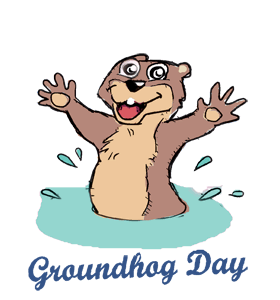Groundhog Day
Groundhog Day Quick Facts in Australia
| HashtagsCompiled on | #GroundhogDay |
|---|---|
| 2026 Date | 2 February 2026 |
| 2027 Date | 2 February 2027 |
2026 Holidays & Dates - Australia
| Australian & Common Holidays | ||
| Misc. & Int'l. Observances | ||
| Christian Holidays | ||
| Jewish Holidays |
› | ||
